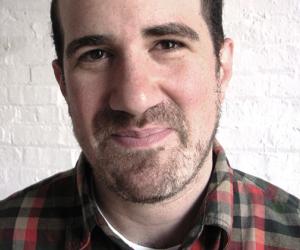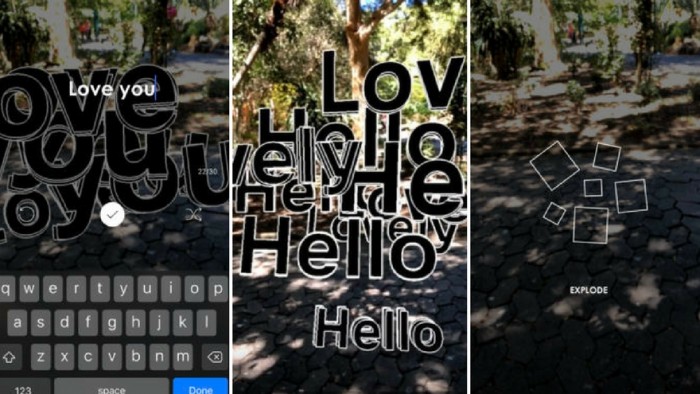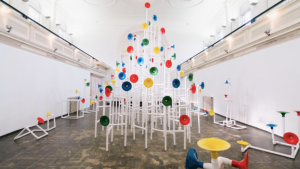Hacker and code artist Zach Lieberman has a cult following on Instagram. Since 2016 he’s been uploading the sketches that he makes using code. These sketches, while mind bending and whimsical, are also an exploration of visual art and new media.
“If you see it, it’s just like a beautiful mine, every day there’s a different kind of experiment,” says Design Indaba founder Ravi Naidoo on Lieberman’s passion project. “So I wanted to know, can we build some coherence around it and we started to develop five strands.”
One of the strands bore fruit this week.
Developed by Lieberman in collaboration with Molmol Kuo and Design Indaba, Weird Type is an app that explores type in space. This development, says Naidoo, is an important function of Design Indaba being more than just a conference and festival.
“Whenever we meet speakers we ask them a fundamental question: What’s your unrealised project. That gives us a great insight to understand what their particular motivations are and what they’re keen on working on,” he adds.
For Lieberman, Naidoo decided to turn his already popular Instagram experiment into something fans could explore on their own. Lieberman combined this idea with his love for typography and decided they’d make an app that would give people the tools to his latest obsession: putting messages in the air.
“How does typography change when it is spatial, when we can move around it and it exists in 3D space?” Lieberman questioned. “This app is a collection of several of our sketches. It’s basically inviting people to jam with our sketchbook.”
To do it, Lieberman enlisted the help of longtime collaborator and interactive artist Molmol Kuo who creates tools that help her tell stories about people, cities, and objects. For the UX and iOS aspects of the build, Lieberman worked with Richard The, Ying Quan Tan, Robby Kraft and Peter Sibley.
But by the time the build began Design Indaba 2018 was only six weeks away, and thanks to the red tape involved with launching an app, the team missed out on an Oprah moment.
“We got the app close to done for Indaba, and demo-ed it on stage and around the festival, but it wasn't in the app store until just after the festival. We had to go through a painful process of rejection first,” says Lieberman.
“We wanted to have an oprah moment – 'you get an app and you get an app' – we didn't have that, but we got so much warmth and excitement from the Indaba crowd to help us get the app out. It was also really magical to be walking around Cape Town, filming and placing typography everywhere.”
The app is now available for download and will soon be updated with new features and tools.
“I think it's exciting to jam with typography in new ways – as designers, we're used to the tools we know well for working with type, but new tools can open up new possibilities for expression and play,” says Lieberman, adding that this is only just the beginning of the Weird Series.
“I am fascinated with using AR + camera, taking photographs and video in space, so I want to make a camera app with sketches we've made along that front. Sound is another space we've been experimenting with recording sound in space and replaying it as you move through it.
“Finally, I love drawing tools and plan to make an app that showcases some of the experimental drawing tools we've been building.”
For Naidoo, the hope is that the app adds a level of accessibility and whimsy to an otherwise intimidating field of technology. Playful and beautiful, the app is also educative, making Augmented Reality (AR) seem beguilingly simple.
“This terminology, this multisyllabic augmented reality sounds like something that geeks do and all of a sudden in a hand-held format on your mobile phone you have become an exponent of Augmented Reality which I think is really neat,” says Naidoo.
“In order to understand where tech is going in this crazy world of AI, AR sensors, robotics and machine learning, we all need to reskill, relearn, and retool these things.”
At the same time, the app is part of Design Indaba’s culture of making.
“With the concepts we present at Design Indaba we need to be able to put it into the hand of a delegate and say: We mean like this and you play with it and see what you can make of it.”









